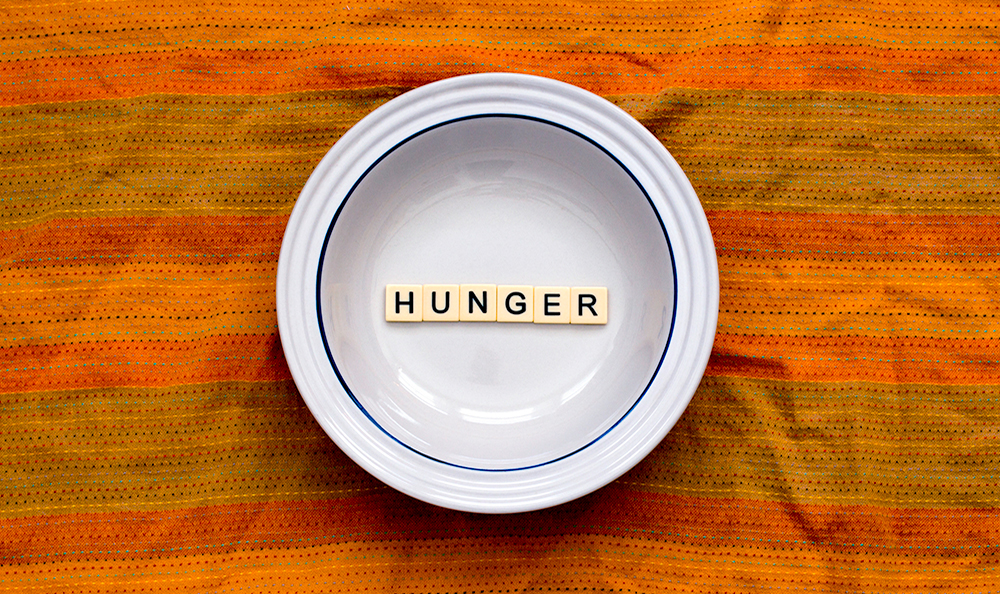More than a third of college students don’t always have enough to eat and lack stable housing, according to a survey released Tuesday by researchers at Temple University and the Wisconsin HOPE Lab.
The report, which is the first of its kind as it includes students from two-year, four-year, private and public universities, surveyed 43,000 students at 66 colleges and universities in 20 states and the District of Columbia and used the Department of Agriculture’s assessment for measuring hunger, reports The Washington Post.
Findings show 36 percent of college students were food insecure in the 30 days preceding the Fall 2017 survey. An additional 36 percent reported housing insecurity while 9 percent reported being homeless.
The numbers increase even more for community college students. Forty-two percent indicated they struggled to obtain adequate food. An additional nine percent said they had gone at least one day during the last month without eating because they lacked money. That number was six percent among university students.hom
An additional 46 percent of community college students and 36 percent of university students reported difficulty paying for housing and utilities.
Results Attributed to Increased Costs, Enrollment of Low-Income Students
Researchers blame the findings on increasing college costs, inadequate aid packages, a move away from standardized test scores as part of the application process, some colleges’ unwillingness to admit they have a hunger problem on their campus and growing enrollment among low-income students.
“There has been an uptick in low-income students on campus, but there hasn’t been a corresponding change in university policy to welcome and prepare for these students,” said Anthony Abraham Jack, an assistant professor at the Harvard Graduate School of Education. Once low-income students arrive, they find their grants and scholarships are not enough to cover all of their expenses.
Sara Goldrick-Rab, a professor of higher education policy at Temple and the lead author of the report, says while conditions remain dire for students from low-income families, the burden of covering basic necessities has spread into the middle class.
“Prices have gone up over time,” she said. “But the rising price is just a piece. This is a systemic problem.”
For poor students, she says, “It really undermines their ability to do well in school. Their grades suffer, their test scores appear to be lower, and overall, their chances of graduating are slimmer. They can barely escape their conditions of poverty long enough to complete their degrees.”
Comparatively, Goldrick-Rab says middle-class students “wouldn’t be going through these issues if they weren’t in college” because “their resources pale in comparison to those high college prices.”
Additional obstacles students face include an increase in competition for low-wage jobs and strict work requirements to receive food stamps.
George Washington University student Emma Montero, a sophomore, works three jobs, including a federal work-study job designed to help low-income students cover college expenses. Montero says her wages, grants, scholarships and low-interest loans have not been enough to make ends meet.
“I’m not going hungry per se, but there are days I’m just not going to eat,” she said. “Today, I am kind of hesitant to buy food, because I have less than $100 and I need to do laundry. Do I want to do my laundry or do I want to eat today? That is the kind of question I’m dealing with.”
Colleges Opening Food Pantries, Partnering with Nonprofits
Some schools, including GWU, have taken necessary steps to begin to combat student hunger. GWU opened a food pantry in 2016, joining the growing list of schools that are members of the College and University Food Bank Alliance. The group started with 12 schools in 2012 and has increased to 600.
Michigan State University was the first school to establish an on-campus pantry and has also begun screening students for food insecurity during visits to its campus health center.
In 2017, UC Irvine opened a 1,800-square-foot food pantry, the largest in the California school system. The pantry also includes a kitchenette for student use, cookbooks for students searching for recipe ideas and 15 different seeds for students who may want to do their own farming. A survey of UC students found 4 out of 10 do not have consistent access to nutritious meals.
Other schools have partnered with nonprofits to distribute unused meals to hungry students or have started giving free dining hall vouchers to students in need.
The survey also found that hunger disproportionately affects marginalized students, including former foster children, LGBTQ students, African-American students and Native American students, according to VOA News.
More than 60 percent of former foster children who responded to the survey were food and housing insecure and almost a quarter had experienced homelessness in the past year.
One of many surprising findings, says Goldrick-Rab, “Is that homeless college students devote as much time to the classroom and to studying as do college students who are not homeless. However, they also work more, they commute more, spend more time taking care of other people and they sleep less.”
Measuring college hunger and homeless is a difficult task, says Goldrick-Rab, as researchers depend on schools to distribute surveys and on students to fill them out. Because of this, she says it is likely that college hunger is more common than her data shows.













